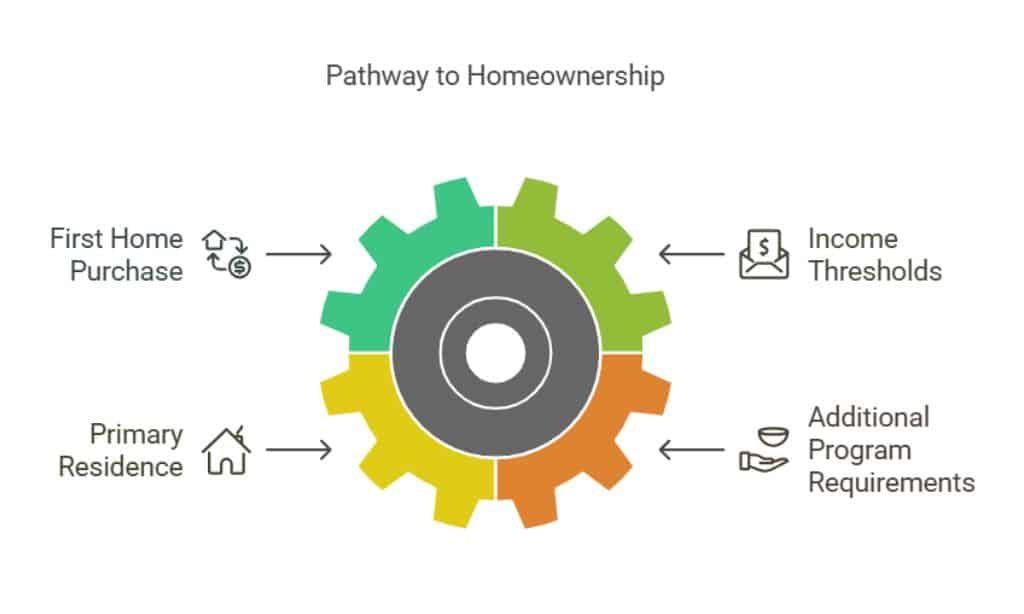Buying your first home in Australia is a significant milestone, but it often comes with financial hurdles.
From securing a deposit to navigating upfront costs, many first-time homebuyers face challenges in achieving their dream of homeownership.
Fortunately, tax relief options for first-time homebuyers in Australia are designed to alleviate some of these burdens, making the process more accessible and affordable.
This guide explores eight comprehensive tax relief options for first-time homebuyers in Australia, providing insights into eligibility, benefits, and application processes to help you make informed decisions.
Understanding Tax Relief Options in Australia
What Are Tax Relief Options?
Tax relief options for first-time homebuyers in Australia refer to government initiatives and financial incentives aimed at reducing the cost of purchasing a home.
These programs can include grants, tax concessions, and rebates, all designed to make homeownership more attainable.
Eligibility Criteria for First-Time Homebuyers
To access tax relief options for first-time homebuyers in Australia, you generally need to:
- Be purchasing your first home.
- Meet specific income thresholds (varies by state).
- Use the property as your primary residence.
- Fulfill additional requirements set by individual programs.
Note: Eligibility criteria may vary across states and territories, so it’s essential to research your region’s specific rules.
8 Tax Relief Options for First-Time Homebuyers in Australia
Let’s take a look.
1. First Home Owner Grant (FHOG)
The First Home Owner Grant (FHOG) is a flagship program offering financial assistance to eligible first-time homebuyers.
This grant is particularly helpful for offsetting the upfront costs of buying or building a home.
- Grant Amounts: Vary by state; for example, up to $10,000 in New South Wales and $15,000 in Queensland. Some regions offer higher amounts for properties in regional areas.
- Eligibility: Applies to first-time buyers purchasing or constructing new homes below a certain price threshold, which varies by state.
- Application Process: Submit an application through your state’s revenue office, usually via an online portal or with the help of your mortgage provider.
Key Details Table: First Home Owner Grant
| State/Territory | Maximum Grant | Price Cap for Eligibility | Additional Notes |
| NSW | $10,000 | $750,000 | Regional bonuses available |
| QLD | $15,000 | $750,000 | Higher grants in rural areas |
| VIC | $10,000 | $750,000 | Extra benefits for regional homes |
Actionable Tip: Check your state’s revenue office website for current grant amounts, as they may vary annually or with budget updates.
Example: In Queensland, a couple buying a newly constructed home valued at $600,000 in a regional area could qualify for the maximum grant of $15,000, reducing their upfront expenses significantly.
2. Stamp Duty Exemptions or Concessions
Stamp duty is often one of the largest upfront expenses when buying a home. Many states and territories offer exemptions or concessions to reduce this cost for first-time buyers.
- States Offering Relief: Most states, including Victoria, NSW, and Queensland, provide full exemptions or reduced rates for eligible properties.
- Eligibility Thresholds: Typically based on property value; for instance, homes under $600,000 in Victoria may qualify for full exemption.
- How to Claim: Apply through your conveyancer or solicitor during the property settlement process.
Key Details Table: Stamp Duty Relief
| State/Territory | Full Exemption Threshold | Partial Relief Threshold | Notes |
| VIC | $600,000 | $750,000 | Sliding scale for properties over $600,000 |
| NSW | $650,000 | $800,000 | Higher thresholds for off-the-plan purchases |
| QLD | $500,000 | $550,000 | Regional variations apply |
Actionable Tip: Combine stamp duty concessions with other tax relief options to maximize savings and reduce your upfront costs.
3. First Home Super Saver Scheme (FHSSS)
The First Home Super Saver Scheme (FHSSS) enables buyers to save for a home deposit through their superannuation accounts, offering tax advantages and higher savings potential.
- Contribution Limits: Voluntary contributions of up to $15,000 per year, capped at $50,000 in total.
- Tax Benefits: Contributions are taxed at a lower superannuation rate, and withdrawals include associated earnings.
- Withdrawal Process: Buyers can apply through the ATO to release their savings once they’ve identified a property.
Example Calculation
If a buyer contributes $10,000 annually for three years into their super, they could save approximately $2,000 in tax each year, adding up to $6,000 in total tax savings.
Actionable Tip: Use the ATO’s online FHSSS estimator to calculate your potential savings and determine how much you can contribute.
4. Low- or No-Interest Loan Assistance
Government-backed loans provide eligible buyers access to affordable financing options. These loans often feature reduced interest rates or eliminate mortgage insurance costs, making repayments more manageable.
- Programs: Examples include Keystart in Western Australia, which offers low-deposit loans without lender’s mortgage insurance.
- Benefits: Lower initial costs and simplified qualification criteria.
- Considerations: Review repayment terms and potential income caps.
Key Details Table: Low-Interest Loans
| Program Name | Region | Minimum Deposit | Special Features |
| Keystart | Western Australia | 2% | No LMI required |
| HomeStart | South Australia | 5% | Flexible loan terms |
Actionable Tip: Evaluate your long-term repayment ability and compare rates with traditional loans before committing.
5. National Housing Finance and Investment Corporation (NHFIC) Initiatives
The NHFIC offers programs like the First Home Loan Deposit Scheme (FHLDS), which allows buyers to secure a property with a deposit as low as 5%, while avoiding lender’s mortgage insurance (LMI).
- Deposit Assistance: Reduces upfront costs significantly by eliminating the need for LMI.
- Availability: Spots are limited and distributed annually.
- Application: Access through participating lenders.
Example: A buyer in Sydney purchasing a $500,000 home with a 5% deposit could save over $10,000 in LMI costs through the FHLDS.
Actionable Tip: Apply early in the financial year to secure your spot, as these programs have limited availability.
6. Off-the-Plan Concessions
Purchasing off the plan offers unique financial benefits, particularly for tax relief.
- Benefits: Reduced or exempt stamp duty in many states, and potential for greater property appreciation by the time of completion.
- Eligibility: Applies to newly constructed or under-construction homes.
- Considerations: Be aware of potential construction delays or market changes.
Key Details Table: Off-the-Plan Concessions
| State/Territory | Stamp Duty Exemption | Notes |
| NSW | Up to $800,000 | Must be primary residence |
| VIC | Varies by value | Additional discounts for regional properties |
Actionable Tip: Review developer credentials and project timelines before committing to an off-the-plan purchase.
7. Energy-Efficient Home Incentives
First-time buyers who prioritize sustainability can benefit from federal and state-level rebates for energy-efficient home upgrades.
- Eligible Features: Solar panels, insulation, energy-efficient appliances.
- Programs: Includes rebates from the Clean Energy Regulator and state-based schemes.
- Application: Provide receipts and certification for eligible installations.
Actionable Tip: Look for homes that already include energy-efficient features to save on upfront costs and utility bills.
8. Regional and Rural Assistance Programs
Governments incentivize buyers to move to rural or regional areas with additional grants and tax breaks.
- Tax Benefits: Concessions for properties located in designated regional zones.
- Programs: Examples include NSW’s Regional First Home Buyer Grant, which provides extra support for rural buyers.
- Advantages: More affordable housing and a relaxed lifestyle.
Actionable Tip: Research infrastructure projects and economic growth plans for your chosen rural area to ensure long-term value.
Final Thoughts
Navigating the world of tax relief options for first-time homebuyers in Australia can seem daunting, but understanding these programs can unlock significant financial benefits. From grants to tax concessions, these options make homeownership more accessible and achievable.
Explore all available opportunities, and consult with professionals to ensure you maximize your savings.










































